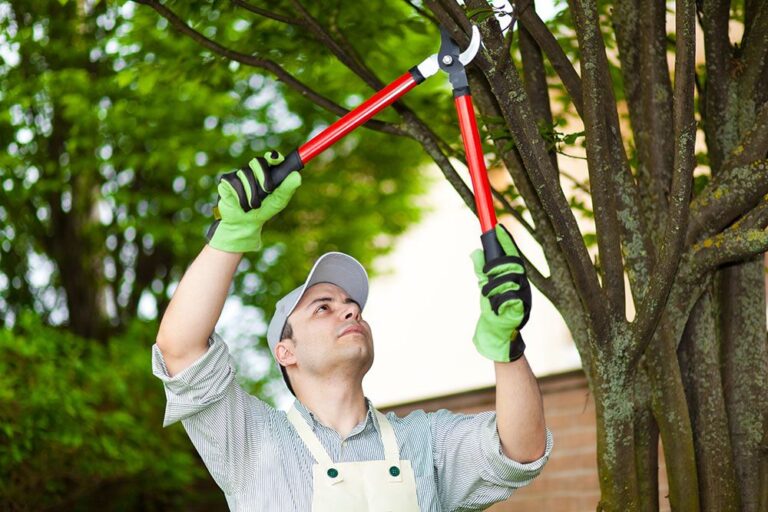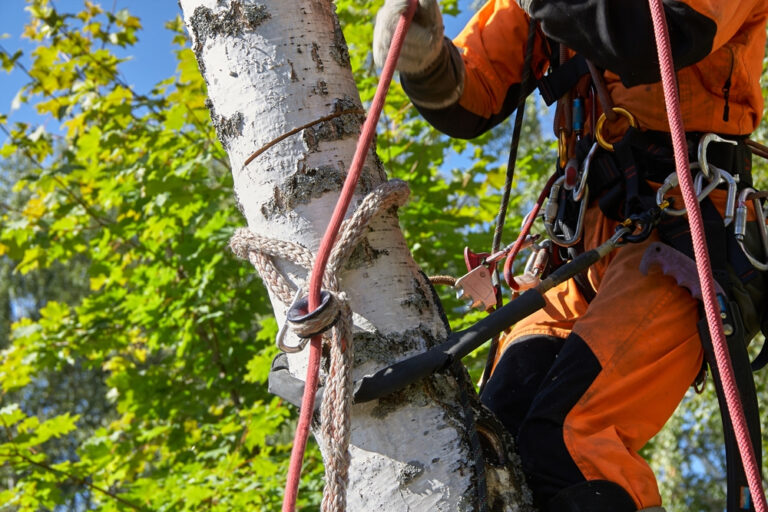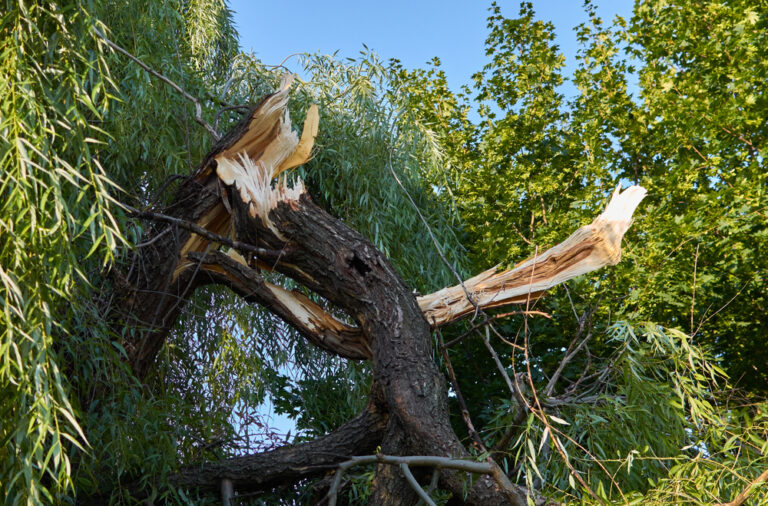Imagine this: A sudden storm sweeps over, severely bending a huge oak tree against your house. Though nobody wants to live this scene, knowing how to react can make all the difference. Tree crises can strike at any moment and usually without notice. These events include fallen trees or big branches that immediately compromise public utilities, property, or safety.
Tree emergencies go beyond storms alone. They can come from old trees, illness, decomposition, or sometimes human action. Whatever the reason, knowing how to properly manage the problem guarantees safety and helps to minimize damage. This guide will walk you through the steps to take during a tree emergency, helping you act swiftly and confidently in times of crisis.
Recognizing a Tree Emergency
First step toward properly addressing a tree emergency is realizing its indicators. While some circumstances are clear-cut, others could call for more study to find possible hazards.
Obvious Signs
Some tree emergencies are immediately noticeable:
- Fallen Trees: Clearly an emergency is a tree that has fallen over and blocks homes, driveways, or roads.
- Leaning Trees: Trees leaning heavily against buildings, cars, or other trees could fall without notice.
- Large Hanging Branches: Branches half broken and dangling dangerously are quite likely to fall.
- Visible Cracks or Splits: Major fissures in the trunk or main branches can endanger the tree’s stability.
- Uprooted Trees: Tucked trunks or exposed roots of trees point to instability.
Less Obvious Signs
Other emergencies might not be immediately apparent but are equally dangerous:
- Decay or Disease: Trees showing signs of rotting wood, fungal growth, or hollow trunks may collapse unexpectedly.
- Insect Infestation: Search for visible insects like termites or beetles, sawdust heaps, or holes in the bark.
- Proximity to Power Lines: Even if they seem solid, trees close to electrical wires can become dangerous in a storm.
- Unstable Soil: Particularly close to slopes or water bodies, trees growing in loose or damp soil are more likely to topple.
Understanding these indicators helps you to see hazards early on and respond pro-actively.
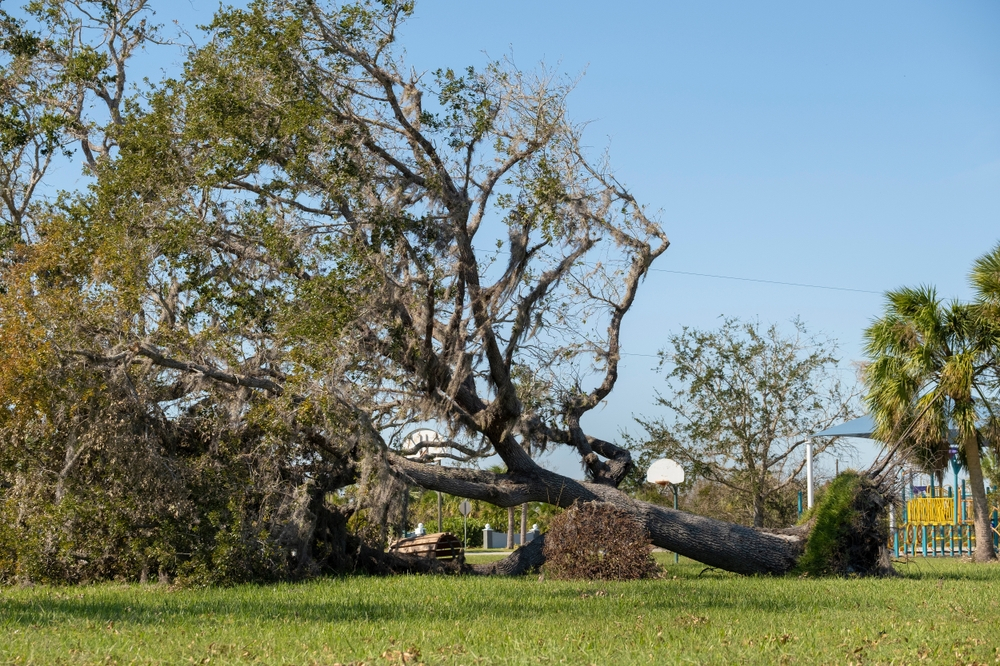
Immediate Actions in a Tree Emergency
When a tree emergency strikes, quick response is absolutely vital. Your answer can greatly affect the situation’s result.
Safety First
Your first concern should be always safety. Use these guidelines to safeguard others and yourself:
- Evacuate the Area: Your first concern should be always safety. Use these guidelines to safeguard others and yourself:
- Avoid the Danger Zone: Your first concern should be always safety. Use these guidelines to safeguard others and yourself:
- Keep Children and Pets Indoors: Make sure they stay comfortably far from the impacted region.
Assess the Situation
Once everyone is safe, evaluate the scope of the emergency:
- Determine the Extent of Damage: See whether the tree compromises utilities, blocks access, or causes structural harm.
- Look for Injuries: Call emergency services for major injuries; first aid for minor ones.
- Document the Damage: Capture the impacted area clearly on pictures and videos. Professional assessments and insurance claims will find great value in this material.
Contacting Emergency Services
When to Call 911
Sometimes quick help from emergency services is required. Call 911 should:
- There are life-threatening circumstances or injuries.
- There are downed electrical lines since they seriously compromise safety.
- The circumstances compromise public safety, like a tree obstructing a main route or generating a flood hazard.
Contacting Local Authorities
For non-life-threatening emergencies, notify your local authorities:
- Police or Fire Department: Inform them of the incident, especially if public roads or utilities are affected.
- Utility Companies: Report any damage to power lines or utility poles. Avoid touching or going near the affected lines.
- Public Works Departments: They can assist with road closures, debris removal, and other safety measures.
By reaching out to the appropriate authorities, you can ensure that the situation is addressed promptly and effectively.
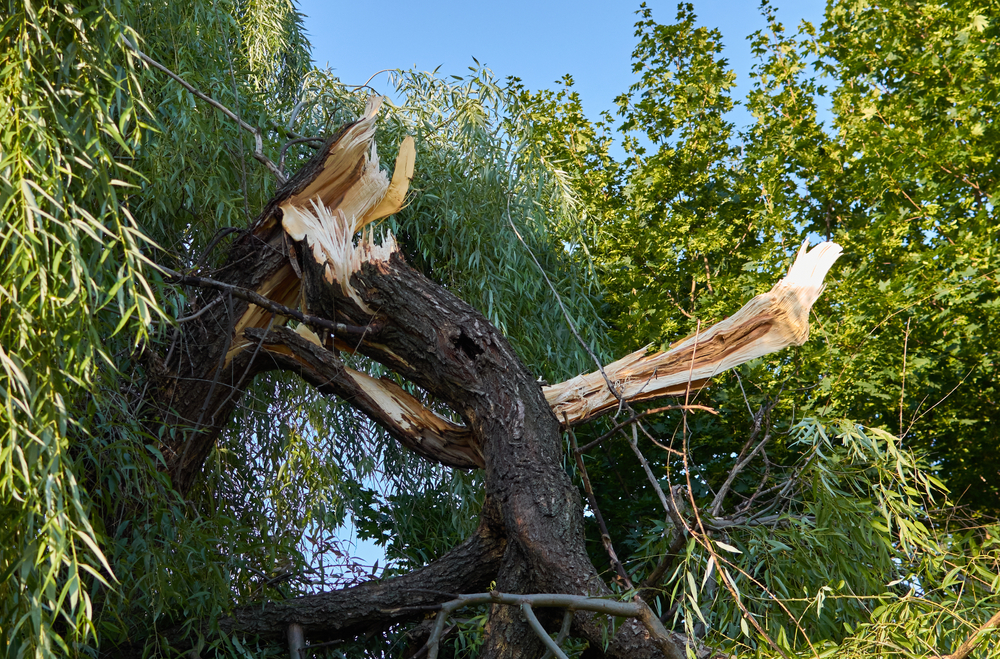
Finding a Qualified Tree Removal Service
Once immediate safety concerns are addressed, the next step is finding a reliable tree removal service. Professionals can handle the situation safely and efficiently.
Research and Recommendations
Start by researching reputable tree removal companies:
- Online Directories: Search for nearby businesses focusing in emergency tree maintenance. Review and grade customer comments and ratings carefully.
- Word of Mouth: Get ideas from friends, neighbors, or nearby landscaping businesses.
- Certifications: Make that the business holds the necessary insurance and uses qualified arborists.
Get Multiple Quotes
Ask at least three companies for quotes to compare.
- Pricing: Consider the cost relative to the scope of work.
- Services Offered: Verify that the company provides emergency services and debris removal.
- Insurance: Confirm that the company’s insurance covers potential damages.
Ask the Right Questions
During your evaluation, ask:
- How much experience do you have with emergency tree removal?
- What safety protocols do you follow?
- What is your expected timeline for completing the job?
- Do you have the necessary equipment to handle large or hazardous trees?
Working with a Tree Removal Service
Clear Communication
Once you have selected a provider, open communication is really vital:
- Provide Details: Describe the circumstances fully, including any risks and the state of the tree.
- Identify Risks: Point out local buildings, power wires, or unstable ground.
- Set Expectations: Share your worries, then make sure everyone agrees on the strategy.
Safety Precautions
Throughout the removal process, give safety first priority:
- Make sure the staff follows accepted procedures and employs correct safety gear.
- Maintaining a safe distance, make sure onlookers—including children and dogs—stay out of the work area.
- Track the work to guarantee effective and safe handling of waste.
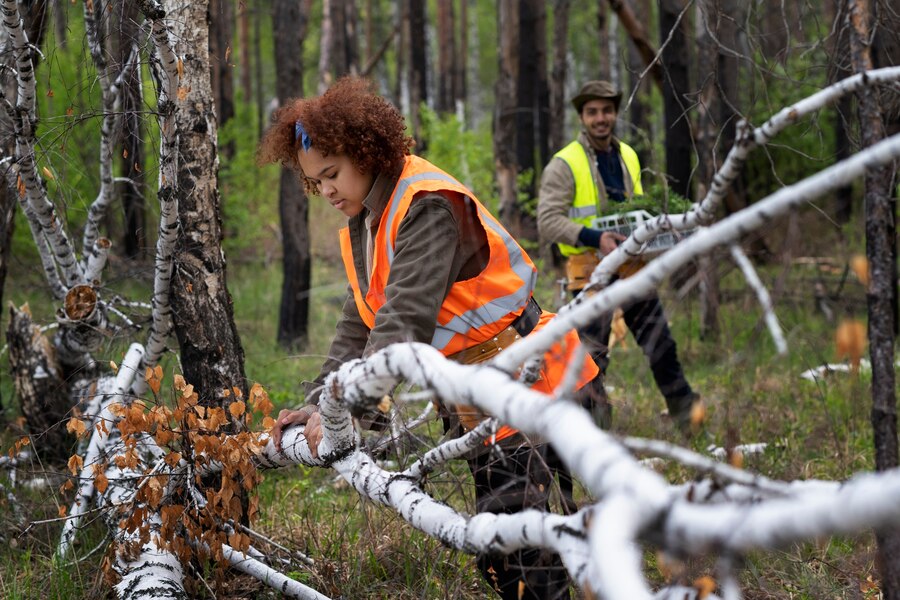
Post-Emergency Cleanup and Tree Care
Debris Removal
The cleaning stage starts once the tree is taken down:
- Dispose of Debris Properly: Use local rules for leaf, wood, and tree branch disposal. Certain places provide drop-off locations or pickup services.
- Hire Professionals: To save time and effort, think about contacting a rubbish removal company for large amounts of trash.
Tree Care
Following a tree emergency, give the health of the surviving trees top priority:
- Inspect Nearby Trees: Check for hidden damage or stress caused by the event.
- Consult an Arborist: Schedule a professional assessment to identify risks and recommend treatments.
- Preventative Maintenance: Regular pruning, watering, and fertilization can strengthen trees and reduce future risks.
Prevention Tips
Acting early can help to lower the possibility of tree crises:
Regular Tree Inspections
Plan at least once a year visits by a qualified arborist.
- Early on find indicators of structural weakness, sickness, or degradation.
- Deactivate possible risks before they become more serious.
Proper Tree Care
Stronger against storms and other stresses are healthy trees:
- Watering: Make sure you water deeply in dry spells.
- Fertilizing: Strengthen tree roots and trunks using the suitable fertilizers.
- Strategic Planting: Steer clear of planting trees too near power lines, homes, or other important buildings.
Storm Preparedness
Prepare your property for severe weather:
- Prune Trees Regularly: To cut wind resistance, remove weak or dead branches.
- Secure Loose Items: Keep yard trash from ruining surrounding buildings or trees.
- Create an Emergency Plan: Create a family evacuation and immediate response plan.
Tree emergencies can be stressful, but with the right knowledge and preparation, you can handle them safely and efficiently. Acting fast to evaluate the circumstances, call experts, and carry out precautionary actions guarantees your family’s and property’s protection. Frequent inspections and maintenance help to reduce hazards and offer piece of mind. Recall that, in doubt, always seek advice from reputable experts and trained arborists.
Tree Trimming Richmond
(804) 533-3943
https://treetrimmingrichmond.com/

